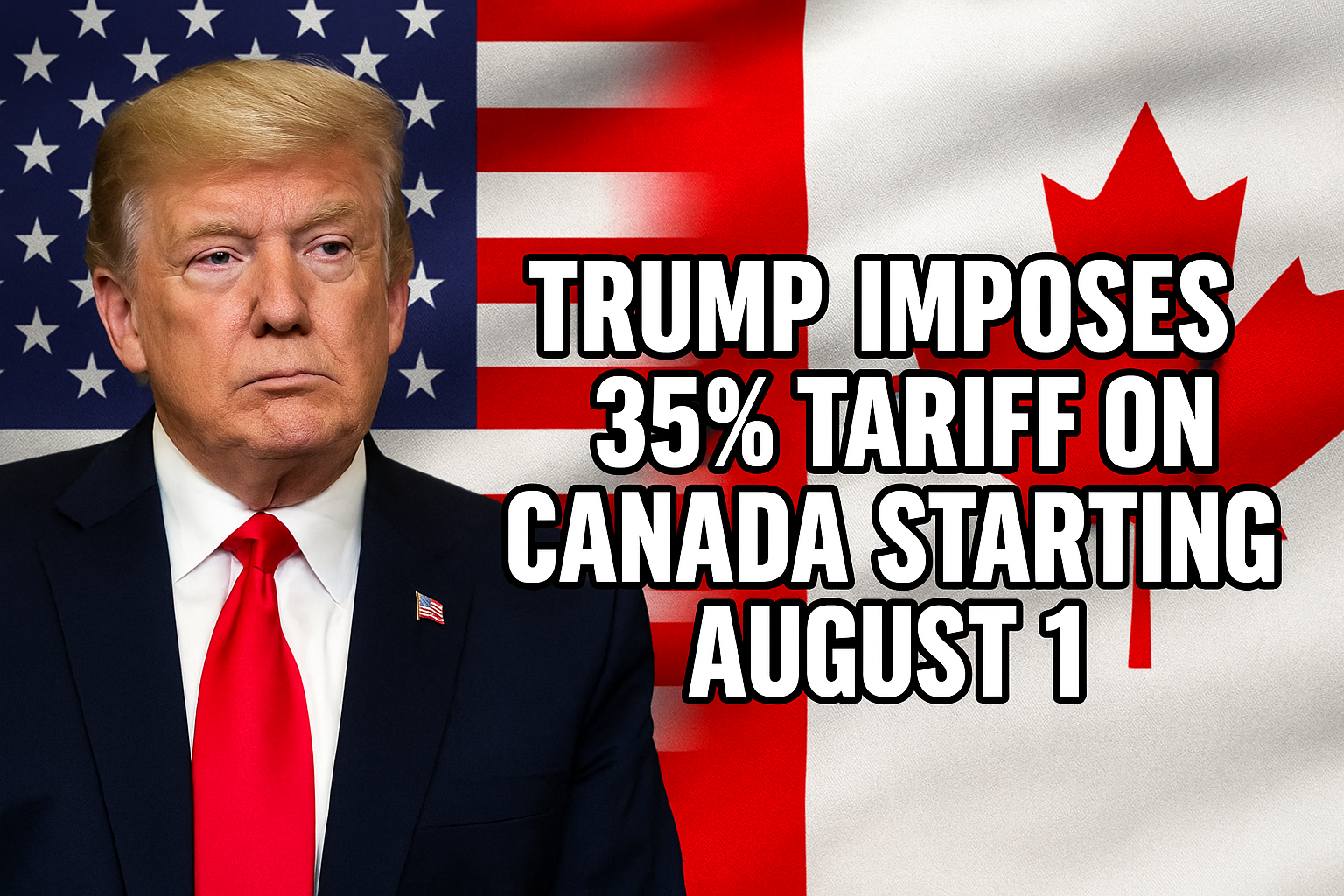Trade tensions have flared as the United States announces a significant tariff hike on imports from Canada, effective August 1. This move, which introduces a 35% tariff, is seen as part of a broader strategy to protect domestic industries and address trade imbalances. Additionally, the U.S. administration has indicated that tariffs ranging from 15% to 20% could soon target other trading partners.
Below, we explore the details of this decision, its potential implications, reactions from around the world, and what this could mean for consumers, businesses, and global trade.
What Are Tariffs and Why Do They Matter?
Understanding Tariffs
Tariffs are taxes imposed by a country on imported goods. They make foreign products more expensive compared to locally-produced alternatives. Governments use tariffs to protect domestic industries, retaliate against unfair trade practices, or generate revenue.
Purpose of the Recent Tariff Hike
The new 35% tariff on Canadian imports is part of the U.S. administration’s trade policy aimed at reducing reliance on foreign goods, promoting local production, and addressing what it sees as unfair trade practices by its partners.
Details of the New Tariffs
35% Tariff on Canadian Imports
Starting August 1, all goods falling under the targeted categories from Canada will face a 35% import duty when entering the U.S. This is a sharp increase compared to previous rates and is expected to affect industries like agriculture, manufacturing, and consumer goods.
15–20% Tariffs for Other Countries
The administration also signaled that other countries could face tariffs between 15% and 20% in the near future. These nations have not been specifically named yet, but analysts expect they will include major trading partners in Europe and Asia.
Economic and Political Motivations Behind the Tariffs
Protecting Domestic Jobs
One of the main justifications given for the tariffs is to protect American jobs by making imported goods less competitive, thus encouraging consumers and businesses to buy domestically-produced products.
Addressing Trade Deficits
The administration has long expressed concern over trade deficits — when a country imports more than it exports — and sees tariffs as a way to level the playing field.
Sending a Strong Message
This move also sends a signal to international partners that the U.S. is willing to take aggressive steps to defend its economic interests.
Potential Impacts of the Tariffs
On Consumers
Higher tariffs typically lead to higher prices for imported goods. Consumers may see price hikes on products that come from Canada and other targeted countries.
On Businesses
Many businesses that rely on imported raw materials or components may face increased costs, which could affect profitability and competitiveness.
On International Relations
These tariffs could strain relations between the U.S. and its trading partners, potentially sparking retaliatory measures and escalating trade tensions globally.
Reactions to the Announcement
Domestic Reaction
Supporters of the tariffs argue that the measures will strengthen the domestic economy, protect jobs, and encourage investment in local industries. Critics warn that it could lead to higher costs for consumers and businesses and disrupt supply chains.
International Response
Countries potentially affected by the additional tariffs have expressed concern and are evaluating possible responses, which could include their own tariffs on U.S. goods or appeals to international trade bodies.
Historical Context: Tariffs in U.S. Trade Policy
Tariffs have been used throughout U.S. history, from early efforts to protect nascent industries in the 19th century to more recent trade wars. This latest move fits into a broader pattern of protectionist policies seen in various administrations over the decades.
Strategies for Businesses to Adapt
Diversifying Supply Chains
Businesses can mitigate the impact of tariffs by diversifying suppliers, sourcing more from domestic producers, or looking to countries not affected by the tariffs.
Passing Costs to Consumers
Some businesses may adjust pricing to pass on the additional costs to consumers.
Advocating for Policy Change
Industry associations and businesses may lobby policymakers to reconsider or modify the tariffs.
The Global Trade Landscape
Potential for Retaliation
History shows that tariffs often lead to counter-tariffs, creating a cycle of escalating trade barriers that can hurt global economic growth.
Impact on Global Markets
Financial markets may react negatively to rising trade tensions, as uncertainty affects investment decisions and economic forecasts.
What’s Next?
The administration has indicated that it is open to negotiations but remains firm in its resolve to implement tariffs unless substantial changes occur in trade practices by its partners. Stakeholders around the world are watching closely to see if this move leads to concessions, negotiations, or a broader trade conflict.
Conclusion
The U.S. decision to impose a 35% tariff on Canadian imports starting August 1, along with potential 15–20% tariffs on other nations, represents a significant shift in trade policy. While aimed at protecting domestic interests, it brings with it challenges and risks, including higher prices, strained international relations, and potential retaliation. How this situation unfolds will depend on how trading partners respond and whether negotiations can avert a prolonged trade conflict.
Businesses, consumers, and governments alike must prepare for the possible economic consequences and adjust strategies accordingly.
FAQs
Why is the U.S. imposing a 35% tariff on Canada?
The U.S. administration believes Canada’s trade practices are unfair and wants to protect American jobs and industries by making Canadian imports more expensive.
When do the new tariffs take effect?
The 35% tariff on Canadian imports begins on August 1.
Which other countries might face tariffs?
The administration has mentioned that other trading partners could face tariffs of 15–20%, but specific countries have not yet been named.
How will this affect consumers?
Consumers may experience higher prices on goods imported from Canada and potentially from other countries if additional tariffs are imposed.
What can businesses do to cope with tariffs?
Businesses can diversify their suppliers, increase local sourcing, or adjust pricing to mitigate the impact of higher import costs.
